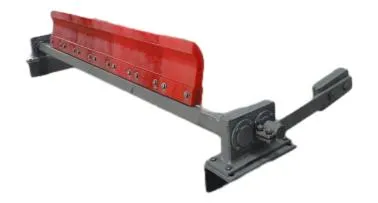 Afrikaans
Afrikaans  Albanian
Albanian  Amharic
Amharic  Arabic
Arabic  Armenian
Armenian  Azerbaijani
Azerbaijani  Basque
Basque  Belarusian
Belarusian  Bengali
Bengali  Bosnian
Bosnian  Bulgarian
Bulgarian  Catalan
Catalan  Cebuano
Cebuano  Corsican
Corsican  Croatian
Croatian  Czech
Czech  Danish
Danish  Dutch
Dutch  English
English  Esperanto
Esperanto  Estonian
Estonian  Finnish
Finnish  French
French  Frisian
Frisian  Galician
Galician  Georgian
Georgian  German
German  Greek
Greek  Gujarati
Gujarati  Haitian Creole
Haitian Creole  hausa
hausa  hawaiian
hawaiian  Hebrew
Hebrew  Hindi
Hindi  Miao
Miao  Hungarian
Hungarian  Icelandic
Icelandic  igbo
igbo  Indonesian
Indonesian  irish
irish  Italian
Italian  Japanese
Japanese  Javanese
Javanese  Kannada
Kannada  kazakh
kazakh  Khmer
Khmer  Rwandese
Rwandese  Korean
Korean  Kurdish
Kurdish  Kyrgyz
Kyrgyz  Lao
Lao  Latin
Latin  Latvian
Latvian  Lithuanian
Lithuanian  Luxembourgish
Luxembourgish  Macedonian
Macedonian  Malgashi
Malgashi  Malay
Malay  Malayalam
Malayalam  Maltese
Maltese  Maori
Maori  Marathi
Marathi  Mongolian
Mongolian  Myanmar
Myanmar  Nepali
Nepali  Norwegian
Norwegian  Norwegian
Norwegian  Occitan
Occitan  Pashto
Pashto  Persian
Persian  Polish
Polish  Portuguese
Portuguese  Punjabi
Punjabi  Romanian
Romanian  Russian
Russian  Samoan
Samoan  Scottish Gaelic
Scottish Gaelic  Serbian
Serbian  Sesotho
Sesotho  Shona
Shona  Sindhi
Sindhi  Sinhala
Sinhala  Slovak
Slovak  Slovenian
Slovenian  Somali
Somali  Spanish
Spanish  Sundanese
Sundanese  Swahili
Swahili  Swedish
Swedish  Tagalog
Tagalog  Tajik
Tajik  Tamil
Tamil  Tatar
Tatar  Telugu
Telugu  Thai
Thai  Turkish
Turkish  Turkmen
Turkmen  Ukrainian
Ukrainian  Urdu
Urdu  Uighur
Uighur  Uzbek
Uzbek  Vietnamese
Vietnamese  Welsh
Welsh  Bantu
Bantu  Yiddish
Yiddish  Yoruba
Yoruba  Zulu
Zulu Components and Functions of Conveyor Belt Systems Explained in Detail
Conveyor Belt System Parts An Overview
Conveyor belt systems are integral to various industries, facilitating the efficient movement of goods and materials. Understanding the core components of these systems is essential for designing, operating, and maintaining them effectively. This article delves into the primary parts of conveyor belt systems, highlighting their functions and significance.
1. Belt
The belt is the most visible component of any conveyor system, serving as the surface on which materials are transported. Typically made from durable materials like rubber, PVC, or fabric, belts come in various shapes and sizes depending on the application. They can be flat, modular, or chevron patterned. The choice of belt material and design is crucial, as it affects the system's efficiency, load capacity, and suitability for specific products.
2. Idlers
Idlers are roller systems that support the belt as it moves, keeping it taut and guiding it along the path. These components reduce friction, which in turn minimizes wear on the belt and enhances overall efficiency. Idlers can be configured in several ways, including troughing idlers (to create a 'V' shape), flat idlers (for flat belts), and return idlers (to support the belt on its return path). Proper idler alignment is vital to prevent belt misalignment and damage.
3. Pulleys
Pulleys are essential for the operation of conveyor belt systems. They are used to drive the belt, support it, and change the direction of movement. There are two main types of pulleys drive pulleys, which are powered by motors to move the belt, and tail pulleys, which return the belt at the end of the conveyor line. The materials and design of pulleys are critical, as they help in the efficient transmission of power and ensure the smooth operation of the system.
4. Drive Unit
conveyor belt system parts

The drive unit is vital for powering the conveyor belt system. It typically comprises an electric motor and gearbox, which work together to generate the necessary torque to move the belt. The choice of motor size, power, and type (AC or DC) depends on the required capacity and speed of the system. Additionally, a variable frequency drive (VFD) can be used to control the speed of the belt for better operational flexibility.
5. Frame
The frame of a conveyor system provides structural support for all other components. It can be constructed from various materials, including steel, aluminum, or plastic, and is designed to withstand the weight of the load being transported, as well as environmental factors like vibration and humidity. A well-designed frame ensures stability and durability, which are vital for the longevity and reliability of the conveyor.
6. Take-Up System
A take-up system is essential for maintaining belt tension and compensating for belt stretch over time. It typically consists of a device that allows for the adjustment of belt length, ensuring that the belt maintains proper tension throughout its operation. This is critical to prevent slippage, wear, and misalignment of the belt.
7. Sensors and Controls
Modern conveyor systems often incorporate sensors and control systems that enhance automation and monitoring. Sensors can detect belt speed, load weight, and even the presence of objects on the belt. Control systems utilize this information to optimize performance, reduce downtime, and enhance safety. These systems can integrate with broader manufacturing and logistics software, providing real-time data for improved decision-making.
Conclusion
Understanding the various parts of a conveyor belt system helps businesses optimize their material handling processes. Each component plays a critical role in ensuring that the system operates smoothly and efficiently. From the belt and idlers to pulleys, drive units, and control systems, every element must be carefully selected and maintained. By investing in the right parts and implementing regular maintenance protocols, companies can enhance productivity, reduce operational costs, and extend the lifespan of their conveyor systems. With ongoing advancements in technology, the future of conveyor belt systems promises even more innovations aimed at improving efficiency and flexibility in material handling.
-
Revolutionizing Conveyor Reliability with Advanced Rubber Lagging PulleysNewsJul.22,2025
-
Powering Precision and Durability with Expert Manufacturers of Conveyor ComponentsNewsJul.22,2025
-
Optimizing Conveyor Systems with Advanced Conveyor AccessoriesNewsJul.22,2025
-
Maximize Conveyor Efficiency with Quality Conveyor Idler PulleysNewsJul.22,2025
-
Future-Proof Your Conveyor System with High-Performance Polyurethane RollerNewsJul.22,2025
-
Driving Efficiency Forward with Quality Idlers and RollersNewsJul.22,2025





























